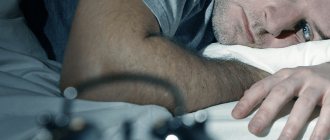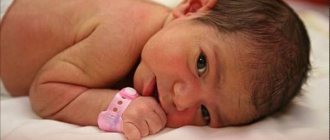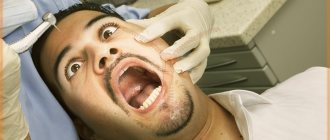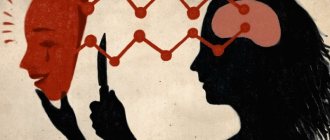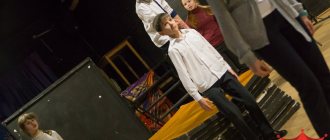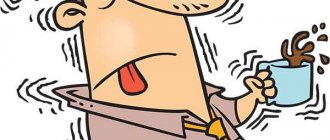April 06, 2021
The concept of cerebral palsy includes a very large group of diseases that have quite different clinical pictures, different degrees of severity of the disease and, accordingly, different outcomes of this disease. The only thing that all these conditions have in common is that the central nervous system, namely the brain, is primarily affected.
Causes of the disease
Cerebral palsy is a common disease.
Its frequency is approximately 2 children per 1000 births, and data may vary depending on the region. The cause of the disorder, like any other cerebral palsy, is pathological changes in the cerebral cortex, subcortical structures, capsules or brain stem. The difference between cerebral palsy and other similar disorders is only in the time of its diagnosis (postnatal period) and the disturbance in the manifestation of reflexes. Cerebral palsy is the result of abnormal development of brain structures or damage to a healthy brain. The process can occur both during pregnancy and childbirth, and in the early neonatal period.
Among the causes of this disease are the following:
- premature birth or birth trauma;
- multiple pregnancy;
- infectious diseases suffered by the mother during pregnancy, as well as mercury poisoning;
- traumatic brain injuries in the early neonatal period or in the first few years of life.
Cerebral palsy is not considered a genetic disease, since most of its cases occur in pathologies of pregnancy and childbirth. However, in 2% of cases inheritance is traced to an autosomal recessive type. Up to half of children with a similar diagnosis were born prematurely. The remaining patients were twins in multiple pregnancies, had low birth weight, or were born by instrumental delivery or emergency cesarean section. It is believed that asphyxia (insufficient oxygen supply to the brain) is one of the factors that can trigger cerebral palsy.
Cerebral palsy can also develop in children born at term. Among the causes that cause such pathologies, birth trauma comes first. In the early neonatal period, they can be caused by brain injuries and other types of brain dysfunction. Heavy metal poisoning, jaundice, stroke - all these factors lead to impaired blood circulation in the cerebral cortex, which affects their normal development. In a healthy child, cerebral palsy can be a consequence of drowning or other cases in which temporary cessation of breathing occurs, as well as inflammatory diseases of the brain, including those of infectious origin.
Is cerebral palsy transmitted from father and mother?
The cause of cerebral palsy is many factors, but they all boil down to the main thing - when the brain does not receive oxygen for a long time, irreversible processes occur that can have serious consequences for the body. Typically, cerebral palsy occurs due to an illness, such as polio. But many diseases are dependent on heredity, the question arises - how do genes influence the possibility of contracting this serious illness, is cerebral palsy inherited?
Scientific research
With cerebral palsy, the child’s gait and movements are impaired, involuntary movements are possible, and muscle stiffness is also observed, which leads to stiffness of the limbs.
The severity can vary - from barely noticeable to the inability to move independently; there are also accompanying diseases, such as epilepsy.
Modern science claims that the cause of cerebral palsy is damage to the child’s immature brain; this damage can be due to toxins, infections, or injuries.
But with genetics it's not so simple. After all, diseases may not be directly transmitted, but still the body may have genetic characteristics that, under certain circumstances, can affect the occurrence and development of the disease.
Some dependence was identified by Pakistani scientists who studied many people with cerebral palsy and found that there is a slight pattern of recurrence of the disease, with a probability of about 10 percent. Researchers in Sweden and England concluded that cerebral palsy has a 2% dependence on hereditary factors, but this statistic was not associated with complications during childbirth.
It is possible that the risk of the disease in twins is due to the fact that it is more difficult for them to develop in utero, and the difficulties are often mechanical in nature and associated with limited space.
But all studies may indicate that a person is genetically more prone to something, but we cannot talk about direct dependence, since this is not a genetic disease, and it cannot be obtained directly from relatives. But still, let’s try to explain the reasons for the potential possibility of getting sick from heredity.
The role of genes
The disease itself is not hereditary, but characteristics of the body that can influence the course of the disease and its severity can be transmitted at the genetic level. Here we can talk about the endurance of the nervous system, its resistance to possible unfavorable factors.
Sometimes the symptoms of cerebral palsy resemble certain diseases of the nerves and muscles that are inherited. Among the genetic factors that influence cerebral palsy, one can identify possible disorders of the blood supply to the brain, spina bifida, blastomatous processes, epileptic, hysterical attacks, and stuttering.
These symptoms are observed both in hereditary diseases and in patients who have acquired cerebral palsy due to a childhood disease.
The fact is that medical diagnostics at the neuromuscular level is labor-intensive and not very developed due to a lack of specialists and equipment, so doctors can identify diseases of the central nervous system that are similar to infantile paralysis with cerebral palsy.
From the editor: Treatment and symptoms of a pituitary tumor
Sometimes cerebral palsy is confused with paralysis resulting from polio, but cerebral palsy is mainly associated with oxygen deprivation of the child in the womb or with complications during childbirth; due to a lack of oxygen, brain function can be impaired.
The connection between cerebral palsy and genetics is that the disease can affect that part of the body that is weakened due to heredity. It is at this point that there may be an intersection of hereditary factors and disease.
No direct connection was found between the genetics of the parents and the child’s illness.
Forms of cerebral palsy and their clinical manifestations
In the first days and months of life, a child with cerebral palsy may not differ from his peers, and symptoms of the disease appear later. Their severity depends on the degree of brain damage, as well as the timeliness of diagnosis and treatment.
The clinical picture of cerebral palsy may include the following disorders:
- increase or decrease in the tone of certain muscles;
- skeletal deformity;
- long-term preservation of reflexes, which normally disappear between the ages of 6 and 8 months;
- impaired reflexes, including swallowing;
- mental retardation, hearing and vision problems;
- convulsive syndrome.
Doctors at the Clinical Brain Institute argue that any changes in a child’s behavior should be a reason for additional examination. Currently, to determine an accurate diagnosis, a generally accepted classification is used, which identifies 5 main forms of cerebral palsy.
Main symptoms of cerebral palsy
Depending on the form of cerebral palsy, the causes of its occurrence, and the main symptoms, the presence of the disease can be recognized immediately after birth, in the first weeks of the baby’s life, or some time later in infancy. An ultrasound can detect the disease only if there is a significant deviation in brain development
It is very important to detect deviations in the baby’s development early. This will allow for his rehabilitation to be carried out as efficiently as possible.
The following features in the child’s behavior should be a cause for concern for parents:
- anxiety, poor sleep;
- convulsions, shudders, epileptic seizures, sometimes stopping gaze. Seizures occur in about a third of patients, and can appear both in infancy and somewhat later;
- developmental delay: he began to hold and raise his head, roll over, and began to crawl late;
- absence or slowing of emotional development (for example, if by the age of one month the child cannot smile at others);
- excessive lethargy or excessive muscle tension, slowness or abruptness of movements. With proper development in babies, hypertonicity in the arms weakens by one and a half months, and in the legs by four months. If this does not happen, there is cause for concern;
- asymmetry of the child’s body - arms or legs are visually different in thickness, or one limb is tense and the other is relaxed;
- delay in speech development.
Having discovered one or more of the listed symptoms in a child of any age, having analyzed the causes of its occurrence, parents must certainly show it to specialists. An experienced pediatric neurologist will help make the correct diagnosis, and also prescribe the correct set of procedures that will improve the child’s physical condition and contribute to his socialization in the future. As the child grows up, it is more difficult, and sometimes even impossible, to put him on his feet, so cerebral palsy should be diagnosed as early as possible .
Psycho-emotional and personal development of the child
The degree to which a child’s psycho-emotional development deviates from normal indicators depends on many factors. And first of all, this is the mental development of the child and the degree of damage to his brain. However, the attitude of the people around the child is no less important.
Psycho-emotional abnormalities in children with cerebral palsy can manifest themselves in different ways. Thus, some children are overly irritable, excitable, and are characterized by sudden changes in mood throughout the day.
Some guys, on the contrary, are shy, fearful, they have difficulty making contact with others, and do not show initiative in their actions.
Most children are characterized by delayed mental development of the infantilism type. This means that they exhibit underdevelopment of the emotional-volitional sphere of personality.
Intelligence in such cases may correspond to the norm. However, it is the emotional sphere that is revealed to be immature.
Parents of a sick child should know that all responsibility for his mental development, for the formation of his character, etc. lies with them. Excessive care and compassion will ultimately lead to the fact that he will withdraw into himself even more and will not develop as a person.
Is psoriasis inherited?
As has already been proven, psoriasis is not a contagious disease.
A person suffering from skin lesions can come into contact with others without the risk of transmitting the disease. As for its nature, the gene is not always inherited, but even if a person received it, the causes of symptoms are rarely congenital. For example, he may become ill as a result of a sharp decrease in immunity or a violation of lipid metabolism in the body.
Often the appearance of plaques is caused by hormonal imbalance, prolonged use of certain medications, or violation of the rules for taking them. Among these drugs are drugs of the antimalarial group, drugs with lithium salts, and beta blockers.
Sometimes pathology begins to develop if a person has suffered from infectious and some other diseases: sinusitis, otitis media, sore throat. There have also been cases of the disease being diagnosed in people infected with HIV.
Lifestyle is a serious factor. Those who visit the solarium too often or spend a long time in the open sun are at particular risk.
Another reason for the development of the disease can be skin injuries: burns, cuts, insect bites. Finally, strong feelings can provoke the appearance of unpleasant symptoms. Moreover, these are not only troubles and severe stress, but also positive emotions if they are expressed too strongly.
From father to child
In some cases, a father can pass on the psoriasis gene to his baby. The risk of inheritance with paternal predisposition to skin diseases ranges from 14 to 19%.
When twins are born, the risk that one of the children will begin to show symptoms of the disease reaches 70%. Approximately the same possibility exists when both parents have psoriasis.
If the baby becomes a carrier of the gene, symptoms may not appear until many years later. But this does not always happen: if there are no other provocateurs, psoriasis is usually dormant and does not cause any inconvenience.
From mother to daughter or son
The situation when a son or daughter can inherit a disease from their mother also occurs quite often. In this regard, women need to take into account several nuances:
From the editor: Is it possible to live with a cerebrospinal fluid cyst?
- During the period of bearing a child, the disease calms down, and symptoms manifest themselves extremely rarely. An exception may be the first trimester of pregnancy, when the body undergoes restructuring;
- During menopause, hormonal fluctuations occur and the disease worsens. By the way, due to hormonal imbalances, psoriasis often appears during puberty;
- When preparing for conception, it is better to consult a dermatologist. The doctor can adjust the treatment or recommend preventive measures, which will allow you to give birth to a healthy baby.
Breastfeeding has its own characteristics. As a rule, at this time, instead of using strong drugs, the specialist selects gentle therapy.
The nature of children's behavior
In cases of mental development disorders associated with cerebral palsy, the following features in the behavior of children are observed:
- the child is guided mainly by emotions associated with pleasure;
- Children with cerebral palsy are characterized by egocentricity;
- they cannot work purposefully in a team;
- they do not know how to correlate their own interests with the interests of the people around them;
- there are elements of infantility in behavior;
- even at high school age, such children have an increased interest in games;
- they are extremely suggestible, incapable of volitional efforts on themselves;
- behavior is also characterized by instability of emotions, disinhibition;
- children tend to get tired quickly;
- they have difficulty adapting to new conditions, they have various fears - most often fear of heights, darkness, etc.;
- children are very sensitive to the mood and behavior of others, which is reflected in increased impressionability: incidents that are neutral for other children can cause a violent reaction in them.
- Sleep disturbances, nightmares, and nighttime anxiety are common.
Severity of motor disorders
In severe cases, patients are deprived of the ability to stand upright and walk. They are completely dependent on those around them, they move with accompaniment and only with the help of special technical means.
With an average degree of severity of motor disorders, verticalization of the body is noted and walking is formed. However, movement is only possible using special devices and depends on environmental conditions.
In mild cases, children walk independently. They may have an abnormal position of the head and body, and gait features.
Features of physical development
Impaired motor activity in cerebral palsy leads to curvature of the spine, contractures and other pathologies of internal organs. To prevent complications, it is very important to form muscle tone.
All work and attention of parents should be directed to the correct formation of motor functions. The most appropriate interventions would be massage and therapeutic exercises.
The main thing in classes is their early start, as well as continuity. The success of treatment will depend on this.
A set of exercises is selected depending on the severity of the disease and individual developmental characteristics. Corrective work comes down to the formation of vital skills, such as the ability to walk and take care of oneself.
The acquired skills must be adapted to everyday life, constantly practiced until they become automatic.
Features of motor development of children with cerebral palsy:
- it is necessary to stimulate his interest in outdoor games;
- you need to develop fine motor skills;
- it is also necessary to form a correct image of your body;
- It is also important to stimulate communication with others;
- At every opportunity, it is necessary to develop the child’s self-care skills.
Development of fine motor skills in children with cerebral palsy:
Motor disorders in cerebral palsy
- Violation of muscle tone (such as spasticity, rigidity, hypotension, dystonia).
- Restriction or impossibility of voluntary movements (paresis and paralysis).
- The presence of pathological tonic reflexes, pathological postures, movements, while the severity of tonic reflexes reflects the severity of the disease.
- Insufficient development of chain righting (statokinetic) reflexes (formation of vertical body position and voluntary motor skills).
- Violation of the sensations of movements - kinesthesia (involuntary friendly movements accompanying the performance of active voluntary movements).
- The presence of violent movements, hyperkinesis and tremor (shaking).
- Impaired balance and coordination of movements (ataxia), instability when sitting, standing and walking, inaccuracy, disproportion of movements (primarily of the hands).
Factors influencing the child's will
Factors influencing the will of the child can be divided into:
- external, which include the conditions and nature of the disease, the attitude of others towards the sick child;
- and internal ones, such as the child’s attitude towards himself and his own illness.
Weakness of will in most children suffering from cerebral palsy is directly related to the characteristics of their upbringing. Very often in a family with a sick child, one can observe the following picture: the attention of loved ones is focused exclusively on his illness, parents show concern about every issue, limit the child’s independence, fearing that he may get hurt or fall, or be awkward. In such a situation, the child himself will inevitably be overly restless and anxious. Even infants subtly feel the mood of loved ones and the atmosphere of the space around them, which are fully transmitted to them. This axiom is true for all children - both sick and healthy. What can we say about children suffering from musculoskeletal disorders, who are distinguished by increased impressionability and acuteness of feelings?
Or another picture: an unhappy mother who, while caring for her child, forgets about her own life and becomes a hostage to illness. She looks tired and unhappy. But any child needs a happy mother, capable of giving love and warmth, and not her health and nerves. For a sick baby, this need is a thousand times greater.
All this leads to the fact that the child grows up lacking initiative, unsure of his strengths and capabilities, and timid. He resigns himself to his illness and does not strive for independence. He expects in advance that those around him will do everything for him. Over time, the child gets used to this state of affairs and finds it comfortable. And from here comes a pronounced egocentrism, the desire to manipulate people.
The importance of the educational position of parents in relation to children with cerebral palsy is confirmed by the fact that the children among them with a high level of volitional development come from families that are prosperous in terms of the psychological climate. In such families, parents are not fixated on the child’s illness. They stimulate and encourage his independence within acceptable limits. They try to form adequate self-esteem in the child. Their attitude can be expressed by the formula: “If you are not like others, this does not mean that you are worse.”
We must not lose sight of the child’s own attitude towards the illness. It is obvious that he is also significantly influenced by the situation in the family. Studies have shown that awareness of the defect in children with cerebral palsy manifests itself by the age of 7-8 years and is associated with their worries about the unkind attitude of others and lack of communication.
Children can react to the current situation in different ways:
- the child withdraws into himself, becomes overly timid, vulnerable, and strives for solitude;
- the child becomes aggressive and easily enters into conflict.
The difficult task of forming a child’s attitude towards his own physical defect again falls on the shoulders of the parents. Obviously, this difficult period of development requires special patience and understanding from them. The help of specialists should not be neglected. For example, it is quite possible to overcome a child’s worries about his appearance thanks to well-organized psychological work with him.
Thus, the characteristics of the development of the personality and emotional-volitional sphere of a child with cerebral palsy largely depend not only on the specifics of the disease, but primarily on the attitude of parents and relatives towards the child. Therefore, you should not assume that the reason for all the failures and difficulties of upbringing is the baby’s illness. Believe me, you have enough opportunities in your hands to make your baby a full-fledged personality and just a happy person.
Weak genes
It is still generally accepted that cerebral palsy is not a hereditary disease, but there are hereditary mechanisms that can influence its development.
The severity of symptoms can also be transmitted through genes. We are talking about how resilient the nervous system is, how capable it is of resisting negative factors. Scientists have no doubt that there is a relationship between pathological changes in the nervous system and the development of the disease. It has been precisely established that there are genes responsible for the state of the central nervous system and its functioning. In 2% of cases, it was found that cerebral palsy is hereditary.
Can broken DNA cause cerebral palsy? Doctors do not rule out the fact that gene disruption indirectly affects the development of paralysis due to malfunctions of the central nervous system. It is possible that some children are born with a genetic predisposition to a weak nervous system. This can explain the different development of children with the same pathologies (fetal hypoxia, asphyxia, prematurity). Some children develop normally even after such pathologies, while others develop infantile paralysis in one form or another.
Scientists emphasize that hereditary predisposition may be associated with the following factors:
- blood circulation in the brain tissue is impaired;
- spina bifida develops, blastomatous processes are observed;
- hysteria, stuttering, narcolepsy, epilepsy.
All of these manifestations can accompany cerebral palsy of varying severity.
The British medical journal BMJ published the results of many years of research that identified hereditary factors among the causes of cerebral palsy. Scientists observed families in which someone suffered from this disease. It has been established that it can be transmitted through generations. If someone close to you suffers from paralysis, the risk that the children in this family will also experience cerebral palsy increases significantly.
Norwegian scientists have found that cerebral palsy occurs in 2 cases out of every 1000 births. Often the disease leads to disability. The child’s gait and movements are impaired, sometimes speech, thinking, memory suffer, involuntary movements may appear, and rigidity of the muscles of the limbs develops.
The extent to which a patient's functionality is affected depends on the severity of the disease. In severe cases, the patient is unable to move, has noticeable intellectual impairments, and may develop blindness and epilepsy.
The problem in studying cerebral palsy lies in the fact that diagnosing neuromuscular diseases is a labor-intensive process. There is a lack of modern equipment and competent specialists. Therefore, diseases of the central nervous system that are only similar to paralysis are often classified as cerebral palsy.
Cerebral palsy can be associated with genetics in the following way: there is a part of the body that is genetically weakened. This is where disease and hereditary factors may intersect. But a direct connection between the genes of the parents and the child’s disease was not found. The question was also studied: is cerebral palsy inherited from father and mother? The gender of the affected parent has not been found to increase or decrease the risk of developing the disease. The fact that one of the parents suffers from paralysis increases the risk of having a sick child. However, the likelihood that a child will be born with cerebral palsy remains too low, so parents should not refuse to have a child for this reason. If a grandmother or grandfather suffers from the disease, this does not at all affect whether the baby will be born healthy.
Symptoms of cerebral palsy often resemble individual diseases of the muscles and nerves, which are hereditary. There are currently no thorough diagnostic parameters for neuromuscular diseases. This makes making a diagnosis much more difficult. However, cerebral palsy largely depends on the disruption of immunochemical mechanisms that are controlled by genes. Scientists do not stop looking for a broken gene that can trigger the development of cerebral palsy. There is now quite a long way to go in solving this problem. The results obtained are difficult to interpret from a genetic point of view, because scientists have not yet determined how much the predisposition of the nervous system affects the functioning of the brain.
People with severe cerebral palsy find it difficult to arrange their personal life. They rarely go out in society; often, acquaintance is possible only with a disabled person. Such couples rarely have children. If healthy couples have children in 57% of cases, then in couples faced with a similar disease - only in 10-11%. The quality and duration of their lives are reduced due to concomitant diseases and disorders of brain activity. We are talking about a syndrome that develops in severe forms of cerebral palsy. Patients with a mild form can live to a ripe old age.
Practical recommendations
- If your child has sleep disturbances, try to adjust his daily routine. It is necessary to create a calm environment for him, to refuse overly active, noisy games before bedtime. As far as possible, reduce the effect of external stimuli on his senses. Stop listening to music, or let it be soft, unobtrusive instrumental compositions. (Songs with lyrics in a language familiar to the child will be an additional burden for perception, and, therefore, another irritant that prevents the child from relaxing and falling asleep.) Limit watching TV.
- In order for a child to develop an adequate assessment of himself and the world, parents and loved ones, it is necessary to abandon excessive guardianship towards him. The strength of the child’s volitional qualities will depend on how the family perceives the child – as a disabled person who is unable to achieve success in life, or as a person, albeit in some ways different from those around him, but taking an active life position.
- If in the process of working with a child you notice that he is tired - has become irritable, aggressive, or, on the contrary, is overly withdrawn - you should not try to continue working. In order for work with a child to be fruitful, he himself must first of all be interested in it. It's better to take a break, offer him something to play, or just leave him alone for a while. It is likely that after some time the baby will regain energy, and you will be able to continue your activities with renewed vigor.
The need for the development and education of children with cerebral palsy
Even 20 years ago, they did not always agree to educate such children; there were very few boarding schools for them. The problem of this disease and the adaptation of children in society fell entirely on the parents, who often did not have special knowledge and did not fully understand the essence of the diagnosis. Because of this, the child's life was deplorable. There is no opportunity to learn, communicate, develop - this only aggravated the condition. Society's attitude to the problem was negative: children were pitied while they were small, but teenagers and adults with cerebral palsy were simply not accepted into educational institutions or to work. They remained unclaimed.
Recently, the problem of social adaptation of children with disabilities has been treated differently. Of course, at any time, left without any opportunities for development, such a baby will sharply deteriorate. Even if he retains his intellectual function, he loses many opportunities and loses his personality. Children must be given opportunities for learning, communication, games, and normal children's activities. Of course, as much as possible.
Unfortunately, among the causes of childhood disability, cerebral palsy occupies one of the leading positions. From birth, children need constant adult help, supervision, and care. Many of them find it difficult to enter society and begin to communicate even at the simplest level. This is often due to the special behavior of such children: they are irritable, whiny, and sometimes aggressive.
Determination of mental readiness for learning
Children with cerebral palsy undergo regular examinations by a doctor. Based on the physical condition and mental development of the child, the doctor determines whether he can study at school. Next comes choosing the type of school. If the intellect is well preserved and the degree of damage to the nervous system is minimal, then such children can study in a regular school. They may not be the best students, but it is quite possible to finish school. Then they are offered the opportunity to undergo specialized training and find a job.
If your mental state or the severity of your physical condition does not allow you to attend a regular school, then doctors recommend special educational institutions. In extreme cases, the child is considered unteachable. Such situations are rare, with severe damage to the nervous system.
The main parameters for determining the possibility of learning are the personal, intellectual and volitional characteristics of the development of children. Every component is important.
Home schooling
This type of training is preferable. There is a familiar atmosphere here, there are opportunities for relaxation, breaks for sleep and food. The school definitely cannot offer this. On the other hand, there must be someone who is constantly with the child and supervises the activities. Teachers will come to the student. Here he is deprived of the function of communicating with other children, which is not very good: he will not have full social experience, like other children. Such children develop worse speech, and their behavior becomes even more unstable. Parents and teachers make concessions to him and often indulge his desires - this has a negative impact on personal development.
Education is not all that children with cerebral palsy need. You will need the supervision of a doctor, and sometimes the presence of a nurse. Massages and a swimming pool are very helpful in relieving stress and pain from muscle tension. They will also have to be visited regularly. This is also an opportunity to develop your child according to an individual program.
Of course, a child or teenager feels comfortable at home, they are surrounded by the care of their parents. If upbringing is done correctly, children can be quite gentle and understanding. The better the intellect is preserved, the easier it is to cultivate normal moral qualities. The main thing for adults to remember is that their child will not always remain small. We need to prepare him for adult life as much as possible.
Answers from experts
Olga: These are all myths. People with mild cerebral palsy live as long as other people. To whom how much is measured for the family.
Oksana Vladimirova: I once saw a program on TV, after which I had a heart attack. It talked about something, I still don’t remember now, but I will never forget the phrase that the participant in the program said until the end of my life. She said: “My younger brother died at the age of 14, but we were prepared for this, we knew that he would die very early, since he had cerebral palsy.” When I recovered, I immediately started calling my friend, he is a leading neurosurgeon at a republican clinic. I cried and asked how long will my child live? My friend at first couldn’t understand what I was talking about, then he asked where I picked up such heresy? And when he got it, he explained that the problem really exists, but not in the sense that children with cerebral palsy die early, but that with an affected central nervous system it can be very difficult to go through puberty. And that in rare cases, death actually occurs, but not from cerebral palsy, but if there is a concomitant serious heart disease. And this is necessary so that parents, in principle, do not deal with such a child. So, Natasha, don’t panic, don’t listen to the cretins in white coats. It’s interesting, as soon as a person puts on a white coat, we already unconditionally believe him. There are also plenty of idiots among doctors. This does not apply to my neurosurgeon friend. He is a sixth-generation doctor who operates on the most complex cases every day, with authority and headlong. And I’ve known him for more than a quarter of a century.
~Prorok_Leo~: Mostly up to 60...
Damned Lawyer: In China, this disease has practically been eradicated; the state is very seriously involved in this. The rehabilitation course is so perfect that by the time they reach adulthood, those suffering from cerebral palsy are no different from children who grew up healthy.
gone. I apologize if I offended you: well, it’s okay that our average life expectancy is 67 years
Gangster Katipash: Cerebral palsy can be caused by most factors that impair brain development. The main reason is insufficient oxygen supply to the brain - hypoxia (intrauterine or in a newborn). The supply of oxygen can be interrupted by premature separation of the placenta from the walls of the uterus, malpresentation of the fetus, prolonged or rapid labor, and impaired circulation in the umbilical cord. Premature birth, prematurity, low birth weight, RH factor or group incompatibility of the blood of the fetus and mother according to the A-B-O system, infection of the mother with rubella measles or other viral diseases during early pregnancy - and microorganisms attack the central nervous system of the fetus - all these are also risk factors. In the USA, in particular, all research is aimed at studying the two main causes of cerebral palsy: rubella measles and incompatibility of the blood of the fetus and mother. So, the main causes of cerebral palsy are associated with the development of pregnancy and childbirth, and these conditions are not inherited: and such paralysis is often called congenital cerebral palsy (associated with intrauterine pathology or the process of childbirth). A less common type is acquired cerebral palsy, which usually develops before the age of two (traumatic brain injuries due to accidents or brain infections).
Svetik: a child is most often born with cerebral palsy, this is a disorder of the formation of the central nervous system. (sometimes this happens after some vaccinations... they destroy the nervous system) parents just don’t notice this from birth, they just don’t want to believe that their child is far behind. There are different forms of cerebral palsy. a person lives with some all his life... but in general there are many centers where specialists work with children from birth, and many can be cured (if it is detected right away) there is a chance to be cured (even if not completely.. just can’t be started
Studying at a regular school
Some schools accept children with similar problems. But there are many “buts” that need to be taken into account before the baby sits down at the desk with everyone else.
It all depends on several factors:
- physical and intellectual learning ability;
- permission from a doctor to attend an educational institution;
- minimal student aggression;
- the school's ability to accommodate a disabled child;
- availability of qualified teachers in the field of defectology.
Unfortunately, it does not often happen that all these factors are met and a student with cerebral palsy can attend a regular school. Most often, he is sent to home-based training, external studies. It is also very important to choose a special program and approach to the baby. The usual situation: a class of 20-30 people, one teacher - it is impossible to pay attention to everyone. And a child with such a disease needs the constant participation and help of a teacher.
In addition, he cannot always move around on his own, climb stairs, or go to the toilet. His mother or nurse should be with him. This also makes attending a regular school very difficult. Here, non-acceptance by the team comes into the background, but it is no less important. Your baby, like anyone else, wants to have friends and normal relationships. Due to the problems and physical manifestations of the disease, he may be the object of ridicule and even bullying. Parents should take this into account, even if they have the opportunity to attend school and have a normal level of intelligence.
Development of epilepsy in a healthy person
We must remember that no one is immune from epilepsy. But most often it is not adults who get it, but children or the elderly. The incidence of children and adolescents is 1 percent. In older people, epileptic seizures are often a consequence of vascular diseases or strokes.
During the development of the disease, the provoking factor is very important. With proper diagnosis and elimination, the manifestations of the disease can be reduced to a minimum. Choosing a competent doctor during therapy is very important.
Descendants leave us a legacy not only of intellectual abilities or beauty, but also of illness. The nature of epileptic seizures, how the body fights them is still determined by heredity
Along with heredity, external causes and the patient’s attitude towards the disease also have an important influence
Epileptic illness causes many problems for the patient. Seizures change lives and affect personality
But it’s important not to give up. Timely examination and treatment will help save a person, giving him many wonderful moments of life.
Why a regular school is not always suitable
Traditional public school is most often not suitable for children with disabilities, and here are the main reasons:
- the infrastructure of the school grounds and classrooms may not be suitable, for example, there are often no ramps and elevators;
- the pace of study brings discomfort and takes a lot of energy, for example, in high school the daily schedule consists of 7-8 lessons;
- The format of a public school does not allow a child to be productive - the requirements of the program do not correlate with the student’s capabilities, and children with disabilities may find it more difficult to write by hand, keep up with the teacher’s speaking speed, or focus on one task for a long time.
Distance learning for children with disabilities can solve these problems, as it makes the educational process more individualized. An online school can adapt to the needs of a child with a disability and provide the most comfortable conditions for classes.
Specialized boarding schools
Such boarding schools usually accept pupils for 5-6 days a week, and their parents pick them up only on weekends and holidays. Most often, their recipients are patients with severe cerebral palsy. This sounds very harsh and is equivalent to abandoning a sick child. But not every person has the time, means and energy to care for their child, and therefore it is better to place him in a boarding school, where he will communicate with the same “special” children and under the constant supervision of teachers and doctors.
As a rule, everyone is divided into groups depending on their capabilities and skills. And after completing the training, each graduate receives a certificate, lessons are held as in a regular school. In addition to general education subjects, physical education and classes are conducted that promote the development of many skills. There is a nanny and a doctor; if necessary, you can sign up for a massage.
Extra education
In addition to the fact that a child needs to learn to read, write, and count, it is also necessary to develop his other skills, such as motor skills. For patients diagnosed with cerebral palsy, it is necessary to undergo regular massages, which eliminates pain from muscle tension. It is also necessary to learn to swim, which will have a positive effect on the development of the nervous system.
A diagnosis of cerebral palsy does not mean that your child will never learn to speak, wash himself, brush his teeth and understand others. It all depends on how it is dealt with, what programs and methods are used for development. But educational technologies do not stand still; a lot of programs have been invented for children with this diagnosis that are easy to use at home.
Is epilepsy transmitted from mother to child?
It is known that the disease is transmitted more often from father to child than from mother. That is, the disease is inherited more often through the male line than through the female line. But it also passes from mother to daughter or son. The disease transmitted from the mother is more dangerous.
Controversial points regarding the heredity of the disease are that:
- It is impossible to know how and when the disease will manifest itself, at what age. And also why epilepsy may not manifest itself in a child even if both parents have it.
- The reasons for the temporary nature of the manifestations of seizures are unclear (for some people they occur regularly, for others after serious shocks).
- It has not been studied why the nature of the manifestations is different in people (someone can suffer from epilepsy on their legs, while others suffer from seizures).
- It is not clear why the disease may not appear until several years after birth.
It is very difficult to predict the development of the disease. Perhaps the gene that causes the disease should be considered in combination with some kind of injury or infection. Today science does not stand still. In the near future, new steps will be taken to study the inheritance of the disease.
Parental help
If a child has cerebral palsy, the main task of education lies with the parents. No educational institution, no certified teacher, no even the noblest state education system can replace parental care and control. But you shouldn’t think that caring for a child, even one with disabilities, is some kind of difficult task - all the necessary skills and desire to care are inherent in parents by nature. But not only do parents have natural potential, the child also has abilities that are given to him from birth; the task of parents is to reveal the abilities of their daughter or son and help him adapt to life.
Mother's love overcomes barriers
Parents and teachers need to pay attention to psychological and pedagogical points:
- It is necessary to pay less attention to the illness, and more to the development of the child himself, to the assertion of his independence and responsibility. Show that his presence in your life gives you happiness, and the child will respond with redoubled efforts, being active in the right direction, just to bring satisfaction and praise from his parents. Also develop courage, perseverance and other character traits needed to achieve success in life.
- Teach your child that all people are different, and just because he is special does not mean that he is worse. You can emphasize that if a person doesn’t do something better than others, then something else can work out better. The human body tends to compensate for deficiencies; if difficulties arise, a person can achieve results in other ways. For example, if a person cannot earn money through physical labor, he can be diligent and earn much more through mental labor.
- It takes daily focused work. If you want to achieve a certain result in your studies or physical development, you need to take small steps - every day you need to put a brick in the building that you want to build. Don’t put it off “for later” because “later” never comes.
- Physical deficiencies can be compensated for by more significant qualities - intelligence, moral values. But physically, there is no need to be upset - if an ordinary person can become an Olympic champion, then a person, even with significant physical limitations, can lead a completely ordinary life through training and fully take care of himself.
- There is no need to have pity for the child, not only in terms of physical assistance, but there is no need to even look at him with pity. Be demanding without regard to illness, and the child will feel healthy. Even if it is difficult, he will be grateful that at least in the family he is treated as a full-fledged member of society, and he will transfer these feelings into real adult life.
- Being demanding does not mean demanding the impossible. The child is sick, there is no need to deny this, one must constantly strive for recovery, but if one does not accept the disease for what it is, then one does not strive to eliminate it. If the disease progresses or does not recede at an insufficient rate, you need to treat treatment as an integral work that needs to be done daily.
Nutrition and exercise for high blood pressure
Since scientists have found that hypertension is inherited, it is necessary to minimize all manifestations of this disease
It is very important for people who are overweight to pay attention to their own nutrition. They should limit the amount of food they eat. At the moment, there are a large number of articles about proper nutrition.
At the moment, there are a large number of articles about proper nutrition.
If a person shows interest in the problem of excess body weight in himself, then he needs to listen to the opinion of the relevant nutritionists:
it is important to completely avoid coffee and drinks containing large amounts of caffeine; it is advisable to completely abandon the consumption of chocolate, jam, sweets and all kinds of carbonated drinks; you need to exclude white bread and some products made from wheat flour from your daily diet; you cannot eat after eighteen hours; It is not recommended to consume fast food, alcohol-containing drinks, sausages, and refined oils.
Following simple recommendations and rules will help you get rid of extra pounds as soon as possible. Since hypertension in humans is determined by a dominant autosomal gene, we must not forget about preventive measures for this disease. In addition, if you regularly eat right and engage in moderate physical activity, you can notice how your weight will decrease and your blood pressure will stabilize.
As for physical activity, this question can be answered as follows: sufficient physical activity improves the metabolic processes occurring in the body, due to which the pressure does not increase.But it’s worth noting right away that hypertensive patients will have to forget about strength training forever.
This is especially true for professional athletes. All physical activity must be aerobic, that is, provide a certain load on the respiratory and circulatory systems.
The most acceptable sports that are not prohibited from engaging in are light cardio, slow running, walking, swimming and cycling.
If you follow all the specialist’s recommendations, you can improve the general condition of the body and lower blood pressure to an acceptable level. Losing weight will instantly improve your health, and your blood pressure will not rise to a critical level.
Positive emotions
Social educators and psychologists are very good. You need to listen to their advice and draw conclusions. But the child also needs to be given the opportunity to go to church, where he will improve both in the short and long term. Christianity cannot be considered only as a moral teaching; it is also healing, both spiritual and very real, physical.
It is also very important for a child to expand his horizons. It’s good, of course, if you have a computer at home, and it can be used both for games and for learning and work. But we must not forget that children love to play with their peers. It would be good if he had friends, and real ones, and not through social networks. An ordinary club will not work, but perhaps in the city there is an opportunity to spend time with other children with cerebral palsy, and even better - with healthy children. Even if he cannot draw, sing, dance, sometimes it is enough just to look at other children from the outside, and not only new impressions and emotions will arise, but a desire to improve his own life will arise.
Going to exhibitions, theaters, performances, dance competitions, various crowded events, city holidays - this should be present in life on a regular basis. But man does not live by only one culture. No matter how difficult it may be, you need to get out into nature - fishing, a beach holiday by the river or local lake. If possible, organize a resort vacation. Of course, all this is problematic, but we must take into account that these efforts have a good effect not only on the child, but also on the parents - there is an opportunity to communicate more closely with the child, and his positive emotions, his joy will pass on to the father and mother, who, caring about the child, they automatically take care of themselves.
Can cerebral palsy be cured?
Cerebral palsy is an umbrella term for a group of non-progressive conditions that are associated with damage to the brain early in its development (in utero, during childbirth, or in the first two years of life).
It follows from this that it is impossible to “cure” cerebral palsy, since we cannot eliminate the cause of the motor deficit - structural disorders in the central nervous system.
But the consequences of this damage can be compensated to varying (sometimes significant!) degrees.
In order to properly organize the movement of a child with cerebral palsy, it is necessary, first of all, to normalize muscle tone, make maximum use of sensory information, and carry out competent correction of motor disorders.
This requires long-term rehabilitation.
There are many methods, but the basis for successful recovery is exercise therapy, exercise therapy, massages, classes with a speech therapist, speech pathologist, and psychologist.
Work with children diagnosed with cerebral palsy must be comprehensive. And, of course, medication support is needed, which is prescribed by a doctor.
Prevention
If we talk about cerebral palsy caused by genetic failures, then it is impossible to prevent it. Other risk factors can be reduced or eliminated entirely.
- To prevent infection with measles, rubella, and chickenpox during pregnancy, you should be vaccinated against these diseases.
- In the early stages, you can overcome Rh incompatibility.
- To avoid head injuries, you should take care of the baby’s safety, especially from birth to two or three years. Car seats are recommended for infants.
- If IVF is necessary, care must be taken to ensure that the pregnancy is not multiple. This is the task of doctors performing IVF.
Scientists from England and Norway believe that the genetic component is present only during the development of certain forms of the disease. More research is needed to prove this.
Small conclusion
Thus, inclusive education, at its core, is an excellent opportunity for children with special needs to enter an atmosphere of social communication. We can only hope that it will be fully implemented in the post-Soviet space.
The opportunity for different children, with different abilities, to be together, make friends, play, learn to help each other, take care of each other and understand that all people are different, but everyone lives together on the same Planet and under the same sky. It’s just that among them there are those who are the same as the others, only they have fewer opportunities, but they have the opportunity to say - I’m learning!
